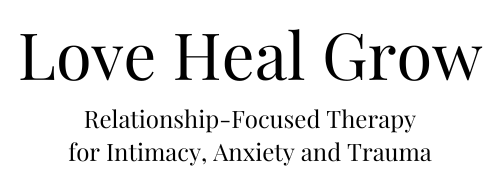
Chronic pain is a condition that affects millions of people, but its causes can sometimes be more complex than physical injury or illness. For many, chronic pain is tied to emotional trauma, often in ways that aren’t immediately obvious. If you’ve experienced trauma, you may notice that physical pain persists long after the initial injury or stressor has passed. This connection between trauma and chronic pain can feel frustrating, but understanding it can offer insights into how to heal.
The relationship between trauma and chronic pain is deeply rooted in both the body and the mind. Trauma can leave lasting imprints on the nervous system, leading to heightened pain sensitivity and persistent discomfort. By learning more about how trauma influences chronic pain, you can begin to explore different ways to address and manage both aspects of your experience.
The Link Between Trauma and Chronic Pain
Trauma has a profound impact on the body, especially when it comes to long-term pain. Whether it’s emotional trauma, physical trauma, or a combination of the two, the body often holds onto the experience in ways that can manifest as pain. When you experience trauma, your body’s nervous system is put into a heightened state of alert, which can continue long after the traumatic event has passed. This prolonged state of stress can make you more sensitive to pain and create a cycle where pain feeds off of emotional distress and vice versa.
In particular, trauma can affect the way your brain processes pain signals. The body’s natural fight-or-flight response, which is designed to protect you from danger, can become stuck in overdrive, leading to increased pain sensitivity. Even if the original injury has healed, the nervous system can remain in a hyper-vigilant state, sending constant pain signals to the brain. This means that for some, chronic pain is less about ongoing damage to the body and more about how the brain and nervous system are responding to past experiences.
Trauma and the Mind-Body Connection
The mind-body connection plays a significant role in how trauma influences chronic pain. When you experience emotional or psychological trauma, it can manifest in physical symptoms, including pain. This isn’t “just in your head”—your body is reacting to the emotional weight of trauma in very real ways. In fact, many people who have experienced trauma report chronic pain in areas of the body where no injury is present, suggesting that the pain is linked to unresolved emotional distress.
The body remembers trauma even when the conscious mind does not. This means that past traumas, even those you may have tried to move on from, can linger in the body and contribute to pain. For example, people with post-traumatic stress disorder frequently report experiencing chronic pain alongside their emotional symptoms. In these cases, addressing trauma can be a key part of managing pain.
It’s important to recognize that trauma can take many forms. It doesn’t always stem from a single event, like an accident or an injury. Long-term stress, emotional abuse, and adverse childhood experiences can all contribute to trauma that affects your body and your pain levels later in life.
How Trauma-Related Chronic Pain Feels
If you’ve experienced trauma, the chronic pain you feel might seem confusing or inexplicable. You may wonder why your body is still hurting even though nothing appears to be physically wrong. This type of pain can feel different from pain caused by an injury or medical condition. It may be diffuse, moving from one area of your body to another, or it may feel like a constant ache that never fully goes away.
Trauma-related pain often doesn’t respond well to traditional pain treatments. Physical therapies, medications, and even surgeries may have little impact, leading to frustration and hopelessness. In these cases, the pain may be a reflection of deeper emotional wounds that need to be addressed in order to find relief.
Common areas of the body affected by trauma-related pain include:
- The back and neck
- The shoulders and jaw
- The abdomen and digestive system
- The head, manifesting as chronic headaches or migraines
This type of pain can come and go, often flaring up during periods of emotional stress. The unpredictability of trauma-related pain can make it even more distressing, as you might feel like you have little control over when it will strike.
Addressing the Root Cause of Trauma-Related Pain
Healing from trauma-related chronic pain requires a holistic approach. It’s not just about treating the physical pain; it’s also about addressing the emotional and psychological factors contributing to it. This means acknowledging the trauma and finding ways to work through it, both mentally and physically.
Therapies that focus on the mind-body connection can be especially helpful for people dealing with trauma-related chronic pain. Somatic therapy, for example, emphasizes the role of the body in healing emotional wounds. By working directly with the body, somatic therapy helps you release stored trauma that may be contributing to your pain. This type of therapy encourages a deeper connection with your body and helps you understand the signals it’s sending.
Cognitive-behavioral therapy (CBT) is another effective tool for addressing chronic pain linked to trauma. CBT focuses on changing the negative thought patterns that may be exacerbating your pain. By learning to reframe the way you think about your pain and trauma, you can begin to break the cycle of pain and distress.
In addition to therapeutic approaches, mindfulness and relaxation techniques can help manage the physical and emotional aspects of chronic pain. Practices like meditation, deep breathing, and progressive muscle relaxation can calm your nervous system and reduce the intensity of your pain. Over time, these practices can help you build a stronger sense of resilience in the face of pain and stress.
The Importance of Seeking Support
Living with chronic pain can feel isolating, especially when it’s tied to trauma. You might feel like others don’t understand your experience or that you should be able to “just get over” the pain. But it’s important to recognize that trauma and pain are complex, and healing takes time.
Seeking professional support can make a huge difference in how you manage both your pain and your emotional health. A therapist who understands the connection between trauma and chronic pain can offer guidance and coping strategies tailored to your needs. They can help you process your trauma in a safe, supportive environment, while also offering tools to manage your pain on a day-to-day basis.
If your pain feels unmanageable, or if it’s affecting your quality of life, it may be time to reach out for help. Chronic pain doesn’t have to control your life, and you don’t have to navigate it alone. With the right support, you can begin to heal both your body and your mind.
Take the First Step Toward Healing
The connection between trauma and chronic pain is undeniable, but it’s also a reminder that healing is possible. When trauma leaves its mark on your body in the form of pain, addressing both the physical and emotional aspects can help you find relief. Understanding this connection is the first step toward managing your chronic pain in a way that feels compassionate and effective.
If you’re ready to explore the root causes of your chronic pain and trauma, consider scheduling a session with a Love Heal Grow therapist. Together, we can work through the emotional and physical aspects of your pain, helping you regain control over your well-being and lead a more comfortable, fulfilling life.
























